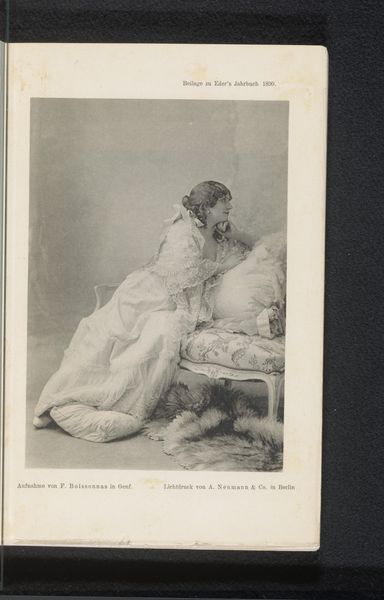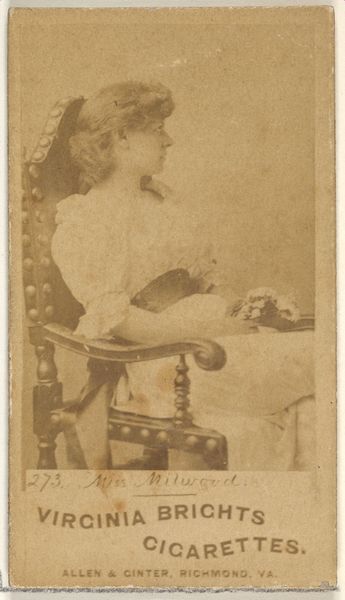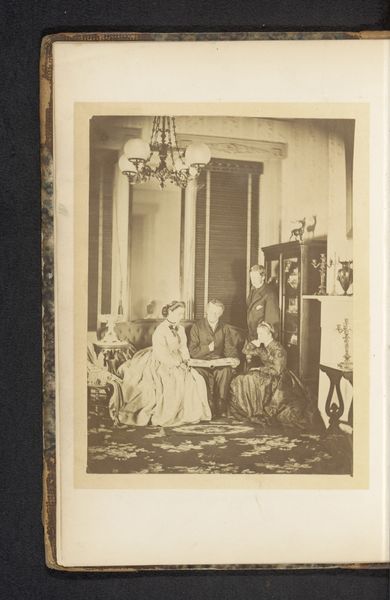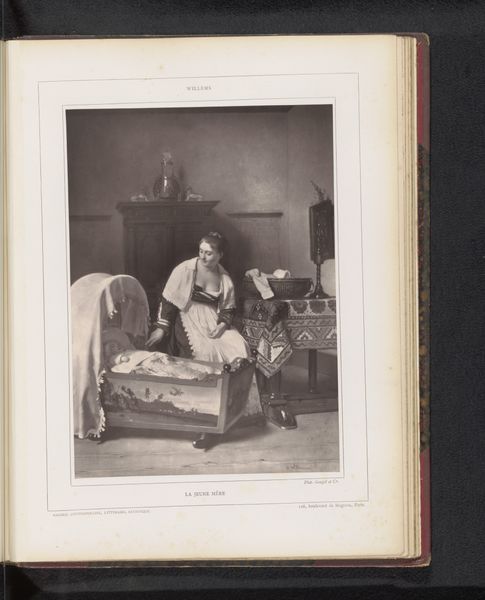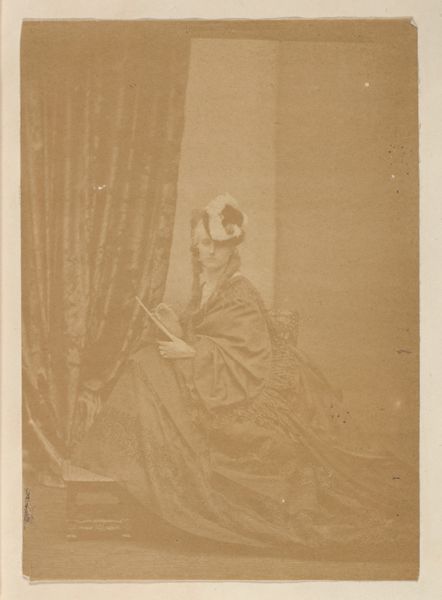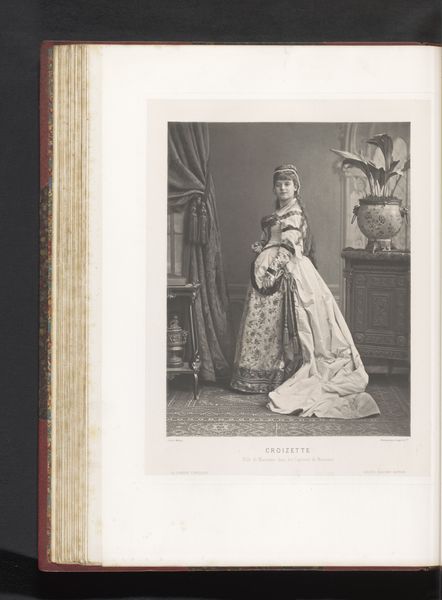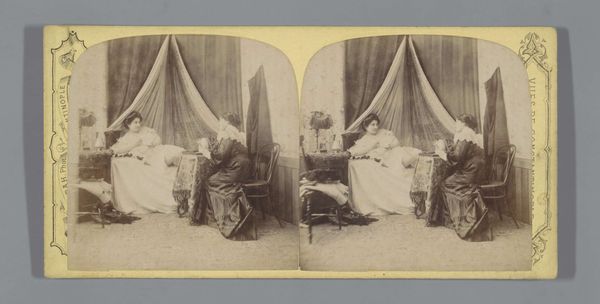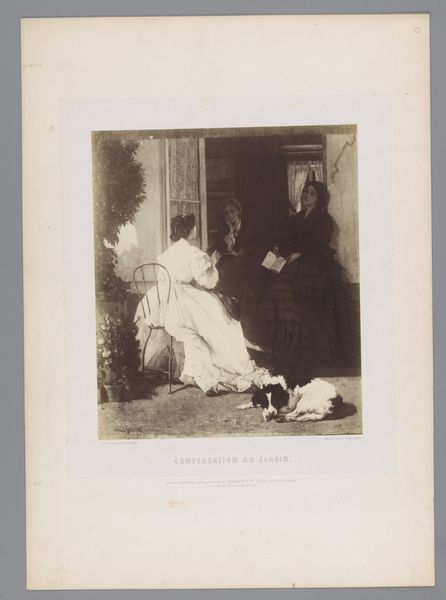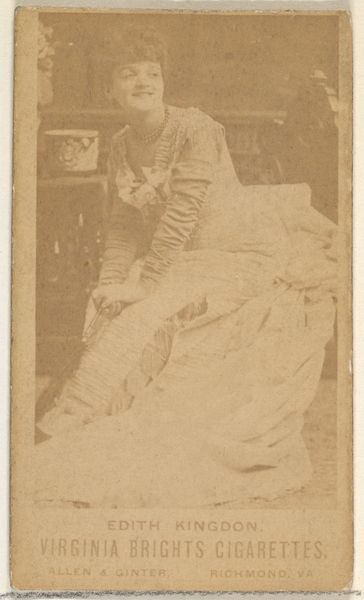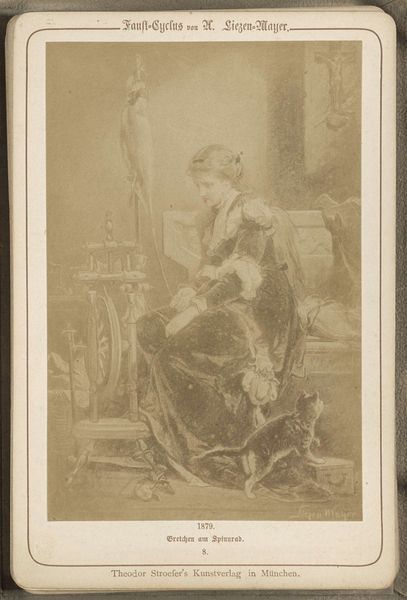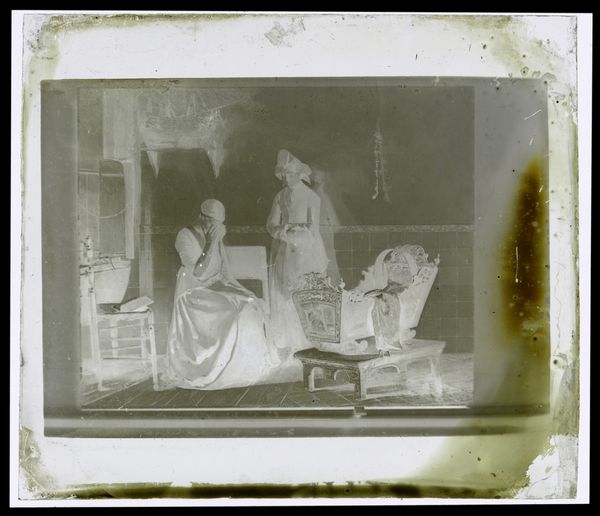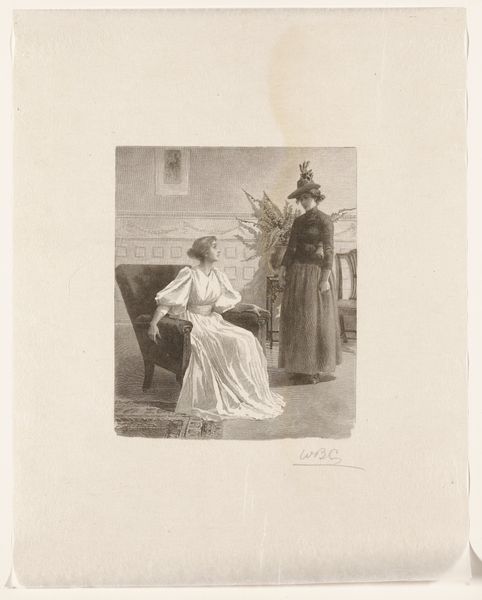
Fotoreproductie van een gravure van een biddende vrouw bij een wieg 1887 - 1888
0:00
0:00
Dimensions: height 69 mm, width 53 mm
Copyright: Rijks Museum: Open Domain
Curator: Here we have a gelatin-silver print from the late 1880s by Marinus Pieter Filbri. The artwork is entitled "Fotoreproductie van een gravure van een biddende vrouw bij een wieg"—or, a photoreproduction of an engraving of a woman praying at a cradle. Editor: The sepia tone and soft focus create an immediate sense of nostalgic sentimentality. The composition directs the gaze inward, toward the delicate figures within the scene. Curator: Indeed, the print is essentially a copy of a copy—Filbri photographing a reproductive engraving which itself was based on a now likely unknown painting or drawing. Given that, it raises questions about authenticity, reproduction, and the role of women within late 19th century domesticity. Editor: Considering the composition and tones, the gravure seems less an attempt at replicating lived experience and more so focused on eliciting an emotional response, with that subdued tonal palette, we may even consider this a romantic work. Curator: Right, especially thinking about the maternal aspects that resonate through its cultural contexts. Perhaps it attempts to normalize this vision, subtly shaping collective expectations around gender roles. It invites conversations about women's unpaid emotional labour—the very real anxieties of motherhood shrouded beneath the gentle presentation. Editor: Let’s focus for a moment on the arrangement itself. The delicate lighting softly envelops the scene. Did Filbri deliberately shoot the reproduction through toned paper to achieve this? Curator: It certainly appears so. The use of aged, toned paper emphasizes the work's themes of memory, time, and preservation while evoking that past's relationship with domesticity. As a tool, this invokes historical sentimentality with viewers that perhaps might cause reflections and challenge viewers perceptions. Editor: I appreciate the emphasis on affect here. On the whole, "Fotoreproductie van een gravure van een biddende vrouw bij een wieg" has many compelling semiotic components which speak volumes about societal trends. Curator: And from my perspective, the artwork allows for critical reflection upon the ways in which past social structures are encoded within popular art and collective consciousness even today.
Comments
No comments
Be the first to comment and join the conversation on the ultimate creative platform.
